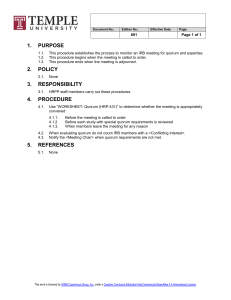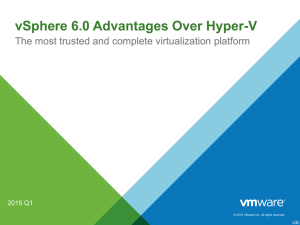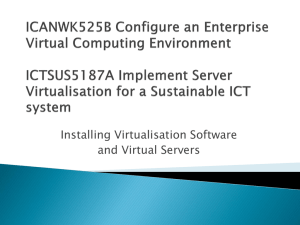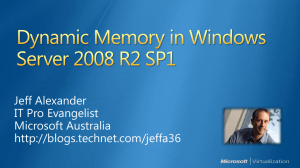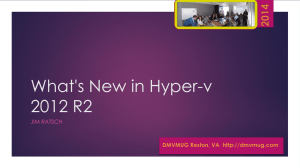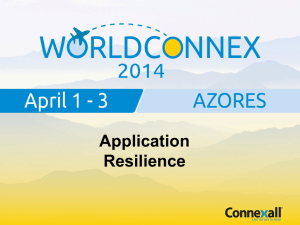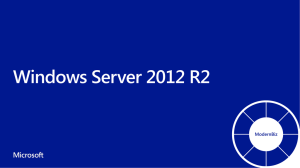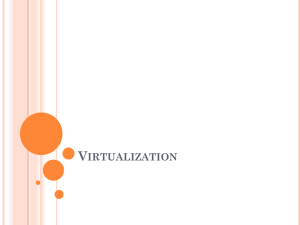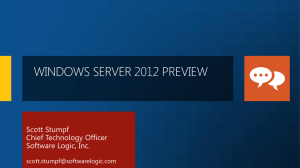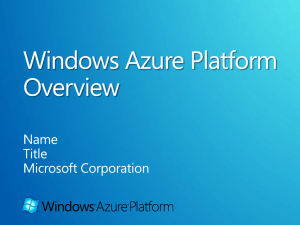Hyper-V - Robert Lisiecki
advertisement
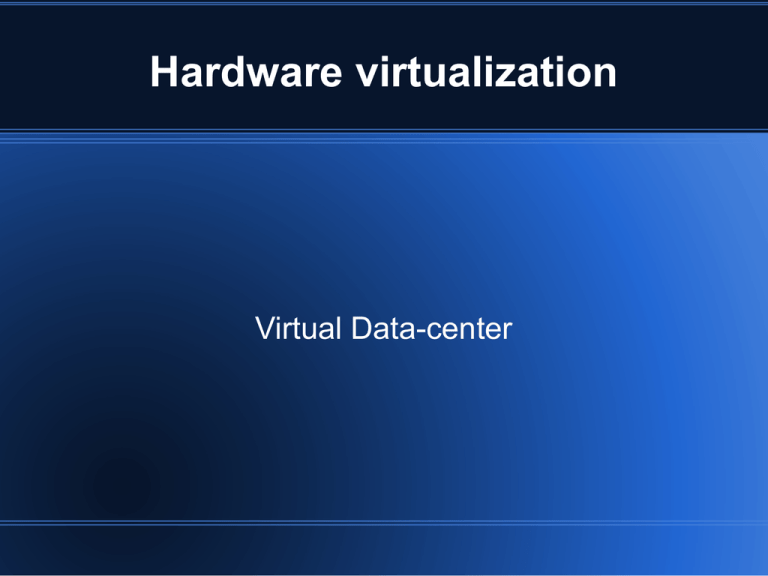
Hardware virtualization Virtual Data-center Benefits Testing Os development (lab environment) Segregation of resources Separation from host Compatibility to any operating system Remote Physical Access Valuable Resources Electricity Real-estate Equipment Networking equipment Servers PDU's Wiring Virtual Hardware Clustering Virtual Resources Live migration SAN migration Network Migration Cloning vs. templates Deployment (Rapid) Metered billing Low down time Easy upgrades (web) Thin provisioning and over subscribing Any guest system for customer Cloud Computing Network capability Network storage (iSCSI) Fail-over Redundant path (MPIO) Management Quorum Node Majority No witness disk or quorum required 50% of nodes must be operational Recommended for odd number of nodes No shared storage required Node and Disk Majority Disk is included in majority vote Can loose half of the nodes as long as quorum is online Can loose the quorum connection if over half of the nodes are online Node and File Share Majority Share is included in majority vote Can loose half of the nodes as long as file share is online Can loose the file share connection if over half of the nodes are online No Majority Quorum disk must remain online Hosts can fail as long as quorum remains online If quorum fails and all hosts are online, the cluster fails Fall-backs Storage space Management Over subscribing Expensive equipment Unexpected maintenance and failure Virtualization platforms VMware workbench ESXI Hyper-v XenServer VMWare Pros Completely Free* No hardware-based virtualization required (Virtualizes a VM) Best Live Migration (i.e., moving running VMs from one host to another) (VMotion cost!) Quick setup Less host system requirements (busyBox) Cons ESXi includes drivers so is large and reduces support Has been exploited Difficult management Best Live Migration (i.e., moving running VMs from one host to another) (VMotion cost!) ESX Server 3.5 is limited to 128 active VMs Hyper-V Pros Hyper-v has small micro-kernel that reduces attack surface and size. Better quorum migrations No additional cost Free** Windows Server 2008 is licensed on a per -processor b asis: When reviewing the table below, please bear in mind that a license for each processor is needed. While there is no technical limitation on the num ber of guests you can run o n the Standard, Enterprise , or Datacenter editions , the num ber of licenses required as part of the host license vary by edition. The following table indicates the num ber of guests included for free in the license of the host. If additional guests over the allowed limit are run on any edition, then additional licenses are required . Furtherm ore, the Active Directory ® service is included with certain editions of Windows Server 2008. This affects the li censing in specific hosting scenario s. The use of Active Directory for the Windows Server host and guest O S is allowed only with the Standard and Enterprise editions. Since the Datacenter edition is licensed only for anonym ous use, Active Directory cannot be used with this edition . The table below provides only a general licensing overview of Windows Server 2008. Depending on the scenario and which edition of Windows Server 2008 is installed on the host, num erous licensing scenarios exist . These are described in the following sections. The licensing for Server Management Suite Enterprise (SMSE) is based on number of physical servers managed by SMSE. In Figure 5, you have to pay for 3 machines – regardless of the number of guests that are running on each host – or – the number of servers on which you installed System Center Components. Here is a numerical example: Assume a Hyper -V cluster with 4 Physical Serv ers; and each server can have up to 8 Virtual Machines for a total of 32 guest VMs (8x4). In order to manage this cluster, you insta ll Server Management Suite Enterprise on two to four servers; with one server dedicated (or shared between) Virtual Machine Manager, Operations Manager, Data Protection Manager and Configuration Manager. Using the sample pricing in Figure 6 above, t he licensing cost to manage all 4 Physical Servers (hosts) and 32 Virtual Machines with these two SMSE servers will be 4 x €39.54 = €159.16 /month. The configuration described in this example is similar to Error! Reference source not found. . Please note that with SMSE, the Client Access Licenses for agents that run on individual hosts or guest VMs are included in the price. Hyper-V Only hardware-based virtualization (e.g., Intel-VT or AMD-V), and virtualization must be enabled in the BIOS. Live Migrations can fail catastrophically May result in cloned VM's, missing VM's, Corrupt VM's Increased overhead cost for hardware Long setup and a lot of management infrastructure MSSQL, SCVMM, SCCM, SCOM, DPM, DC01, DC02, WSUS Hyper-v Each Host requires: fail-over clustering iSCSI HIT File services Hyper-v Group policy management BITS MPIO Hyper-v tools fail-over clustering tools Storage manager for SANs Windows backup tools Command line tools Remote server administration tools (distributed file system tools) Network Support Networking and layout Storage MPIO Management network
